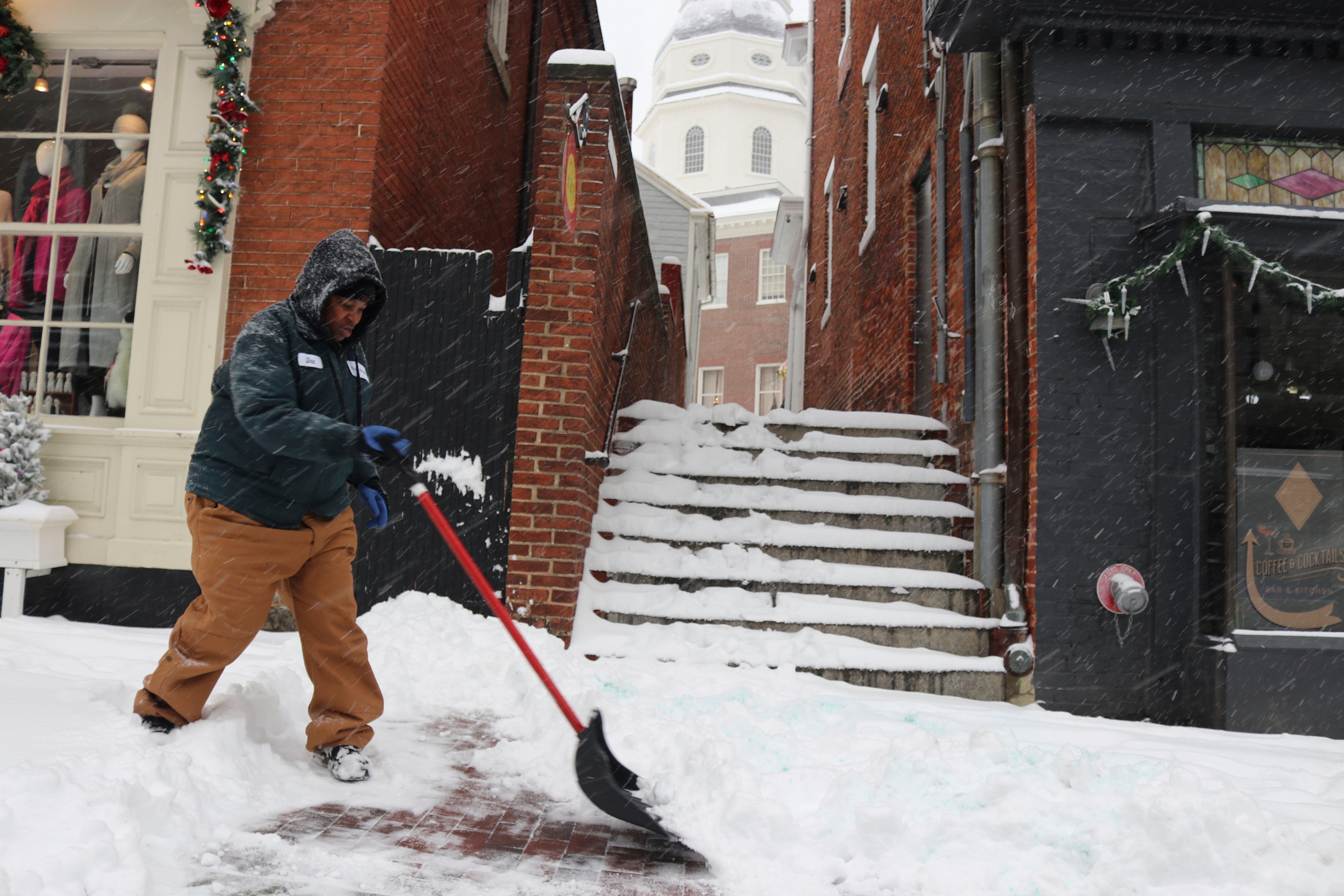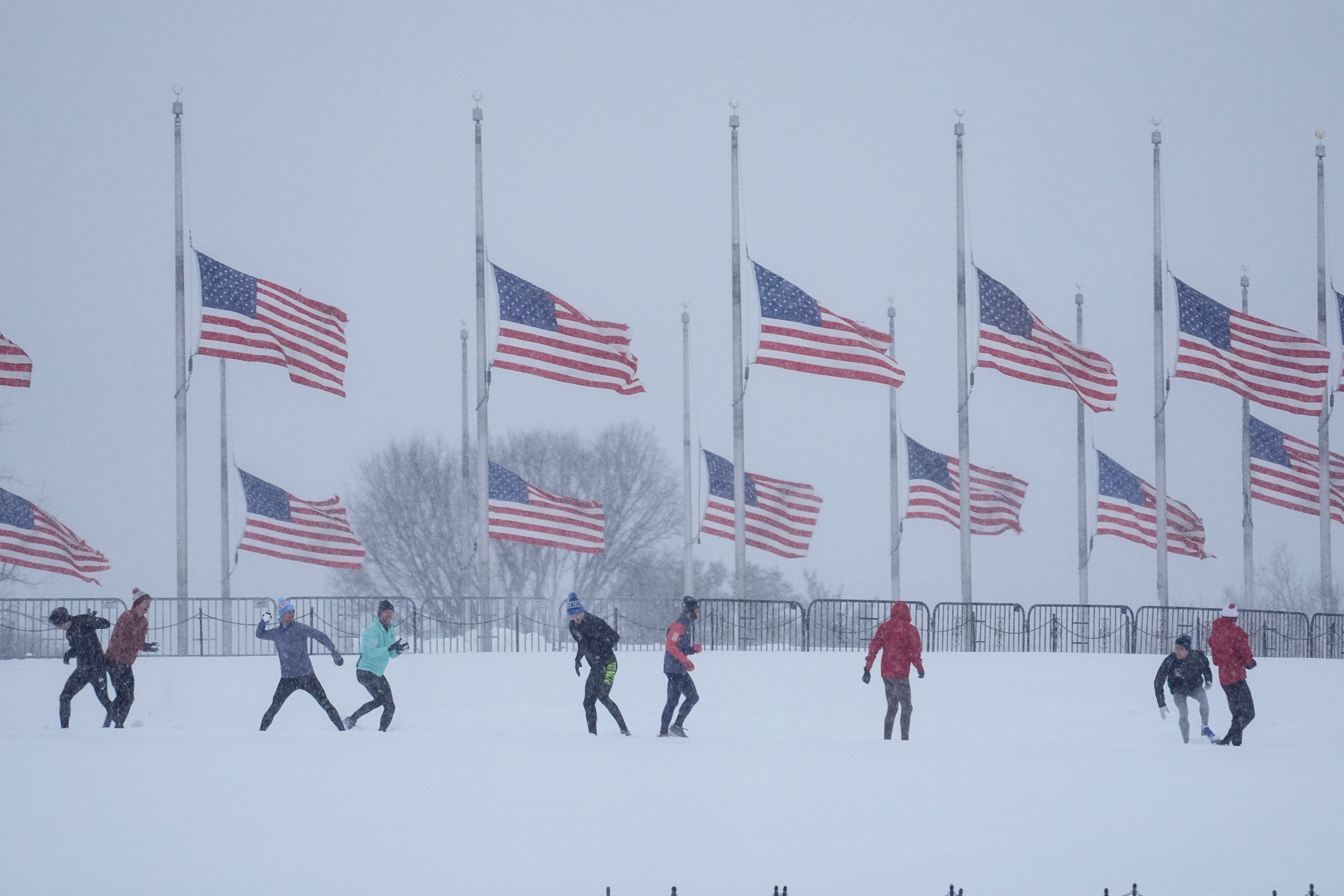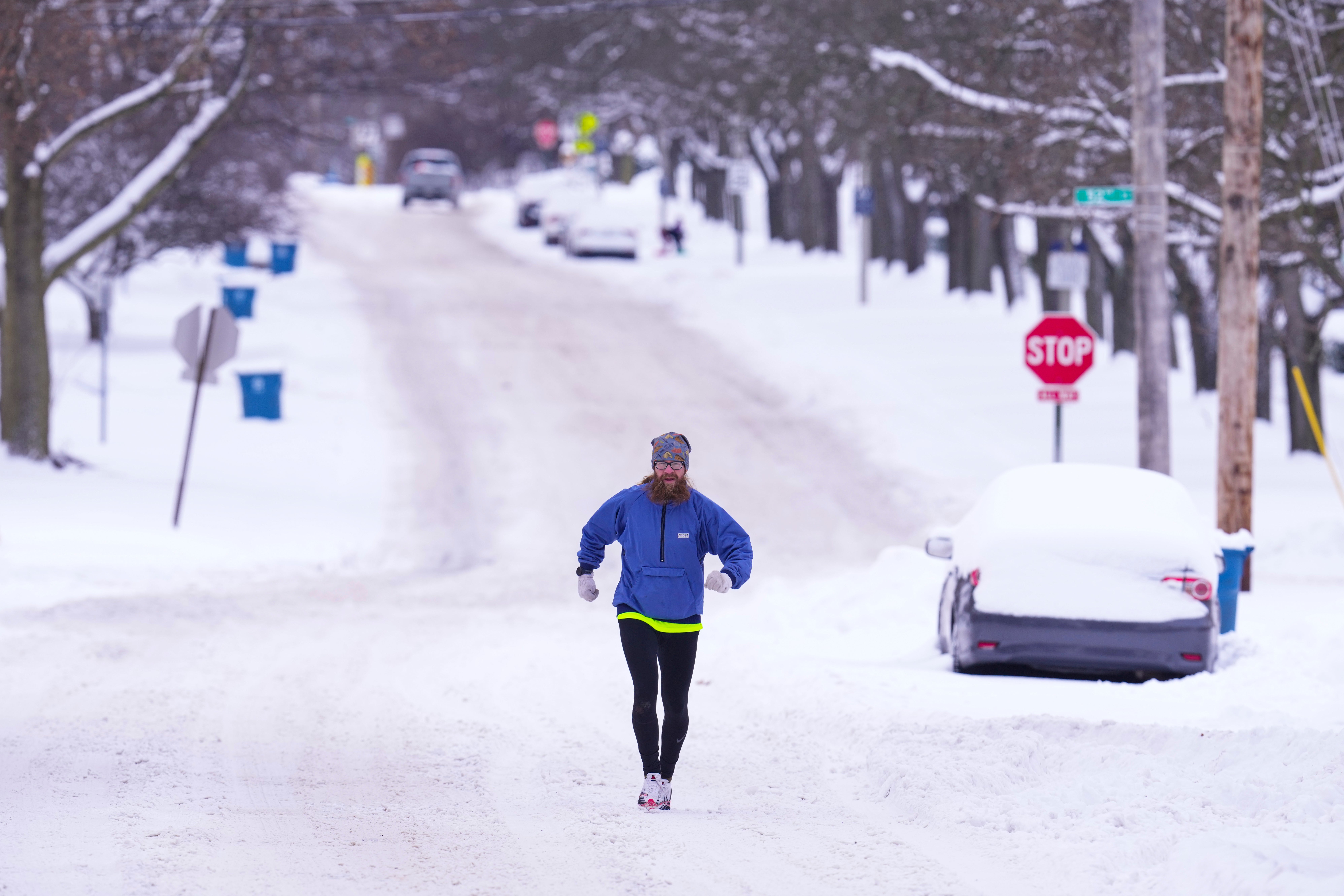A deadly winter storm slammed the mid-Atlantic and Midwest on Monday morning, bringing major travel impacts and knocking out power for hundreds of thousands of customers in several states.
Severe weather that started over the weekend was tied to the deaths of several people in Kansas, Missouri, Virginia, North Carolina, Virginia, and Texas.
In Kansas, an SUV traveling southbound on Interstate 235 spun out of control, the state’s highway patrol said.
“While going down the embankment, the vehicle rolled an unknown number of times. Both occupants were unrestrained and ejected from the vehicle. The vehicle came to rest upright, facing Northwest by the KDOT fence,” the crash report noted.
A young man and woman in their mid-twenties were killed in the incident. They were identified as 24-year-old Nathaniel Boyd and 26-year-old Whitney Almond.

In Missouri, the state’s highway patrol said a 33-year-old man from Neligh, Nebraska, was killed after his vehicle — which had been parked on the shoulder of Mound City’s Interstate 29 — began to slide down a hill. The man was not identified.
Everett Carter, a 61-year-old public works employee who had served Jackson County for 40 years, was struck and killed on Sunday while performing snow removal operations, KSHB reported.
A man identified as Timothy Lee Tanner, 32, died around midnight in Wakefield after his truck ran off the road and struck a tree, according to WRIC. Police said he was driving too fast for roadway conditions and wasn’t wearing a seat belt, while alcohol appears to be a contributing factor.
Cold weather resulted in the death of an unidentified individual in Houston, Texas, according to Fox 26.
And in North Carolina, 46-year-old Roshena Lusandra Mason was driving northbound on U.S. 52 when her Kia lost control, went off the road, and crashed into several trees, according to WGHP. The overpass had been slick due to winter weather conditions.
Hundreds of crashes were reported in Maryland, Virginia, Ohio, and other states. Police advised residents to stay off the roads, and even President Joe Biden had to change his travel tactics while en route to New Orleans following the New Year’s Day truck attack. The White House said the administration was monitoring the storm.

While Biden would drive to Joint Base Andrews in Maryland to board Air Force One, major airports across the affected regions were flung into chaos. Tens of thousands of flights were delayed or canceled within, into, or out of the U.S., with the most reported at airports in Maryland and Washington, D.C., tracker FlightAware showed.
After losing to the Colts, Florida’s Jacksonville Jaguars were reportedly stuck on the tarmac for seven hours at Indianapolis International Airport.
There were also disruptions to cross-country rail travel, and police in multiple states reported hundreds of crashes since the weekend.
In addition to travel woes, the storm also brought widescale power outages to more than 245,000 customers across multiple states. The majority of outages were reported in Virginia, Kentucky, and Indiana, according to online tracker PowerOutage.US.

Feet of snow were reported to have fallen in upstate New York and 18 inches were shown near Interstate 70 in Kansas, according to forecasters. The storm would continue to track through the Mid-Atlantic on Monday, and be followed by dangerously cold temperatures that were spreading across the central and eastern U.S.
Schools were closed in New Jersey, Pennsylvania, Maryland, and Delaware, as well as Richmond, Virginia, and Washington, D.C.
“Our priority is the safety of everyone in our city and getting D.C. cleaned and fully opened as soon as possible,” Mayor Muriel Bowser wrote in a post on social media.
“That said, if you don’t need to be on the roads tonight and tomorrow, stay home.”
As many as 12 inches of snow were expected in the D.C. metro area, with up to four inches projected to fall over the Ohio Valley. Freezing rain and light icing will affect both regions by Monday night.
On Tuesday, light to moderate lake effect snow will continue downwind from the Great Lakes and into upslope regions of Northern New England, the National Weather Service warned.
With reporting from The Associated Press







